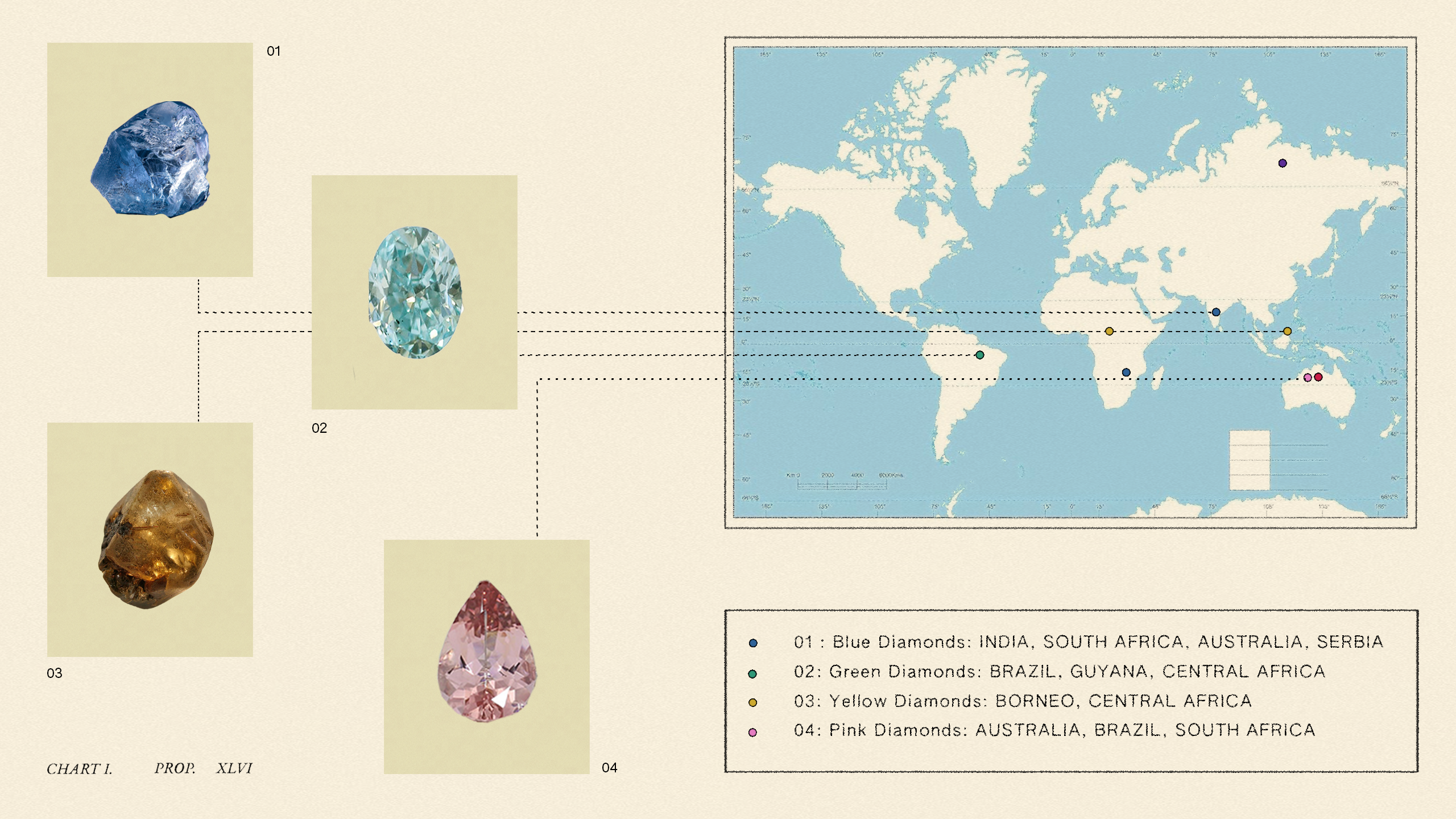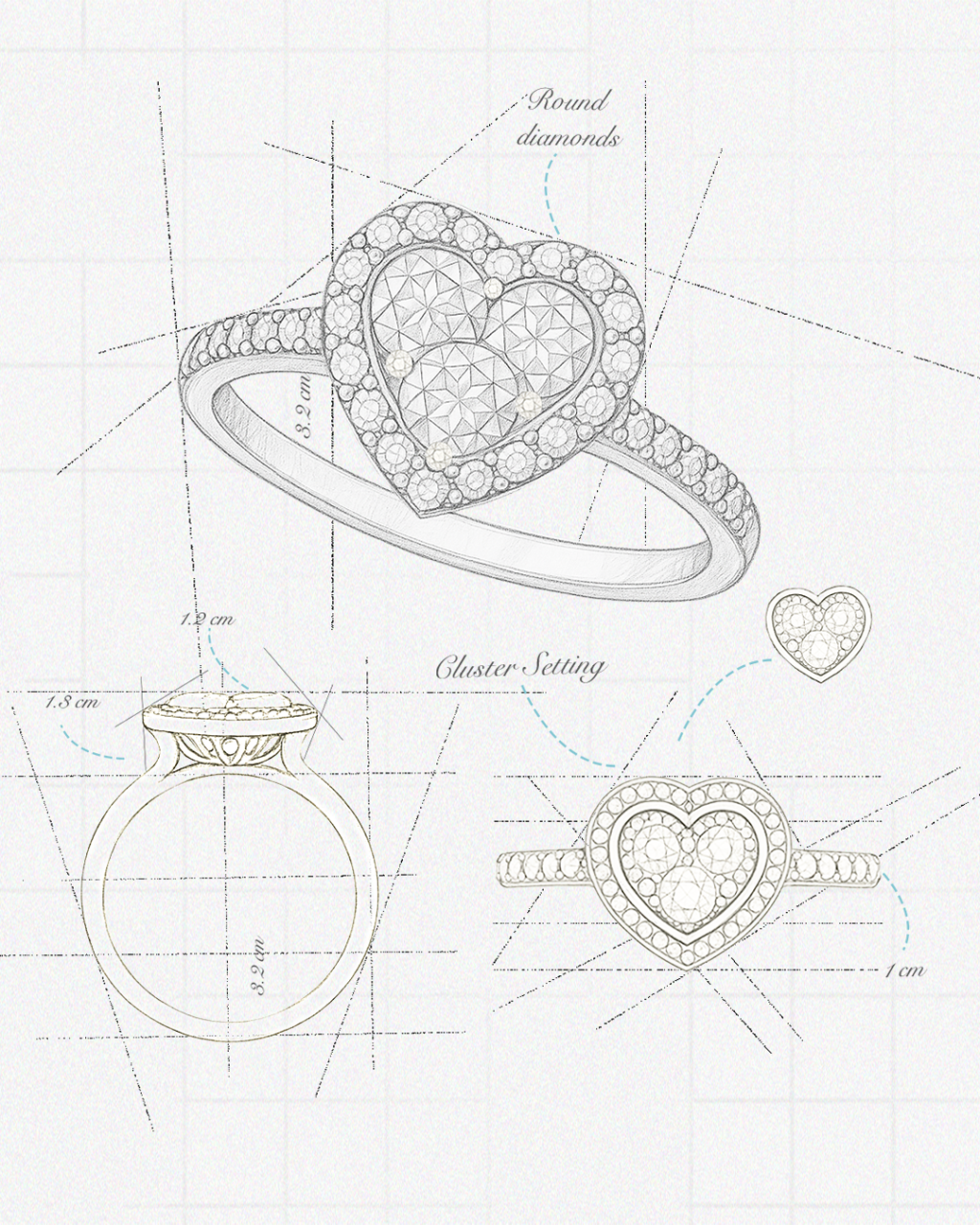What Sets Coloured Natural Diamonds Apart in the World of Gems?
From being unearthed from the deepest layers of the Earth to transforming impurities into masterpieces, coloured natural diamonds define rare beauty

While coloured natural diamonds have been fashion statements for decades, ever so often, a story emerges that reminds us of the natural marvels behind these rare treasures. Whether it’s Scarlett Johansson flaunting her 11-carat brown natural diamond engagement ring at Comic Con in 2019 or Anna Kournikova, first spotted in 2004 on the tennis court with her iconic pink pear-shaped 11-carat diamond gifted by long-time partner Enrique Iglesias, natural coloured diamonds have consistently captured attention and sparked fascination. But what exactly are coloured natural diamonds, and how do they differ from traditional white diamonds in terms of formation, composition and rarity? How do these extraordinary gems acquire their vivid hues, and when did they become the epitome of exclusivity and wealth?
For centuries, diamonds have been more than just ornaments—they have symbolized wealth and prosperity, with each colour often carrying its own symbolic value. There’s a legend that, in the past, only men—specifically kings and noblemen—were allowed to wear diamonds. That changed when Agnes Sorel, the official mistress of King Charles VII of France, made her entrance at the French Court adorned in diamonds. The king’s favourite, she was gifted a five-carat pink natural diamond ring by him, symbolizing the beauty and power she possessed. This occurred sometime in the 14th century, marking an early appreciation of coloured natural diamonds in jewellery. By the 17th century, this appreciation had grown even more, with many of the world’s greatest diamonds being mined from the Golconda mines, including the Dresden Green—a 140-carat green natural diamond considered one of the rarest gemstones.

Green diamonds acquire their colour from a phenomenon called the ‘GR1 center’, wherein over time, radiation knocks carbon atoms out of place in the Crystal structure, creating a vacant site which over time imparts the vivid green colour to green natural diamonds. The Dresden Diamond is one of the most famous green natural diamonds.
The last recorded purchase of the Dresden Green shows it belonged to Augustus III, King of Poland. While there is no official record of its cost, a letter suggests the king was unable to acquire Brno, the capital of Moravia (modern-day Czech Republic), because he spent his funds on the diamond.
The rarity of these fancy-coloured diamonds makes them even more precious than their transparent counterparts. Each one is unique, as no two coloured natural diamonds have consistent colouring due to their formation process. Yellow diamonds—often referred to as cognac, champagne, or zimmy diamonds—are among the more commonly found and purchased coloured diamonds.
The rich colour in fancy yellow diamonds comes from the presence of nitrogen molecules that absorb blue light, thus producing a yellow shade. Different chemicals present during the diamond’s formation result in additional colours present, such as the common brown or orange tint found with yellow diamonds.

These hues result when nitrogen atoms are trapped in the diamond’s crystal lattice, and historically, the renowned Golconda mines of India were a source of such exceptional diamonds. In contrast, blue diamonds, also known as zircon, baby, or midnight diamonds, are formed when boron impurities are present. Exceptionally rare, they are found four times deeper within the Earth than typical diamonds, with famous examples like the Hope Diamond believed to have originated from India. Green diamonds owe their hue to radioactive materials like thorium and uranium penetrating their crystal structure, reflecting green light. Pink diamonds, often referred to as Argyle diamonds, are among the rarest and most sought-after fancy-coloured diamonds. Unlike others, their colour doesn’t result from impurities; instead, extreme pressure distorts the diamond’s crystal lattice, creating their signature pink hue—or, in cases of even higher pressure, a deep red.
It is thought that blue diamonds, unlike most other diamonds, are formed in the lower part of Earth’s mantle, and that the boron creating their blue colour originates from serpentinite minerals carried from the ocean floor by ducts.

As fascinating as they are, these coloured natural diamonds—accounting for approximately just 1 carat coloured diamond found for every 10,000 clear diamonds—come with their own set of challenges. Crafting them is no easy task, as achieving the perfect cut requires careful attention to their colour intensity and precise angles to bring out their full brilliance. Take, for instance, the legendary Moussaieff Red Diamond, one of the rarest and most extraordinary gems ever discovered.

Subjected to extreme heat and pressure under the surface of the Earth, red and pink natural diamonds do not acquire their colour as a result of chemical impurities, but as a result of the heat and pressure.
While it may not be enormous at 5.11 carats, the Moussaieff Red holds the distinction of being the largest red diamond known to date. Unearthed in the 1990s from Brazil’s Minas Gerais mines, it was initially called the Red Shield Diamond. The rough stone weighed 13.90 carats before being sold by a Brazilian farmer to American diamond expert William Goldberg, who skillfully cut it into a trillion shape to highlight its deep, fiery hue. In the early 2000s, the diamond found its way into the collection of Shlomo Moussaieff, a London-based jeweller originally from Israel, who renamed it after himself.
Similarly, the Daria-i-Noor , one of the largest known pink diamonds, is a testament to India’s historical significance in the world of natural coloured diamonds. Weighing approximately 182 carats, this diamond is renowned for its pale pink hue and is believed to have originated from the famed Golconda mines in India. Once part of the Mughal treasury, it now resides in the Iranian Crown Jewels collection, housed in the Central Bank of Iran in Tehran.

While diamonds are often celebrated as symbols of rarity and perfection, coloured diamonds tell a different story—one where beauty emerges from imperfection. These extraordinary gems owe their captivating hues to impurities and natural anomalies, turning flaws into masterpieces. From the infamous Blue Hope Diamond to the dazzling Pink Star , coloured natural diamonds serve as timeless reminders that true artistry lies in embracing imperfections and transforming them into works of art.




